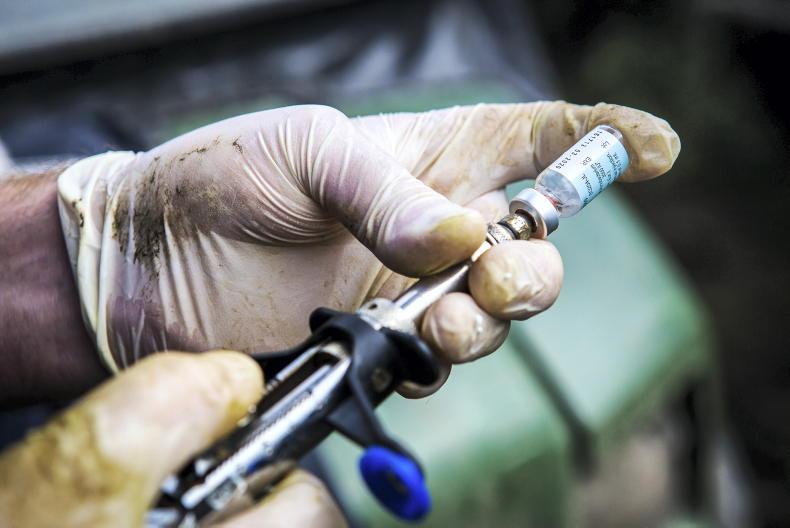While some continue to question the merits of a targeted cull of badgers in TB hotspot areas of NI, the data from England suggests that the policy is having a positive effect in driving down disease rates in cattle.
With around 17% of roadkill badgers in NI infected with TB, and concerns that the disease rate could be significantly higher due to limitations with the post-mortem test, the aim of the cull in NI is to reduce disease pressure coming from the wildlife population.
Where numbers are reduced after four years of culling in the chosen zone, this would then allow vaccination to be rolled out among remaining badgers. A similar long-term policy exists in England.
The latest TB figures show that 22,084 cattle in England were slaughtered due to TB infection in 2022, the lowest yearly figure since 2007. Herd incidence (new breakdown rate among TB-free herds) across 2022 was 8.4%, down from 8.8% in the previous year.
England is broken up into a number of areas dependent on TB risk. A “high risk” area is mainly in the southwest, surrounded by an “edge area” and a “low risk” area mainly in the north and east.
In the “high risk” area an increased number of herds did go down with the disease in 2022 than in the previous year, which is thought to be due to more herds being moved over to six-month testing. However, at the end of 2022, less herds were under restriction than at the start of the year, while the total number of TB cattle slaughtered in the “high risk” area during 2022 was down 18% on the 2021 figure. It is this “high risk” area where badger culling has mainly been concentrated.
The first two culling licences were issued in 2013 (Gloucestershire and Somerset), followed by Dorset in 2015.
By 2020, a total of 54 cull licences were in place.
Culling is done in the autumn, usually for a period of six weeks until badger removal targets are met.
Disease rates
Looking at recent data, it is clear that in the 10 areas where culling has been ongoing the longest, there are now significantly fewer TB-infected cattle being found.
In Gloucestershire, incidence rate has dropped from 10.78% in the year before culling began to 6.64% eight years later.
Over the same period, incidence has dropped in Somerset from 25.01% to 9.69%.
The Dorset figures show incidence going from 14.3% to 6.6% by year six of culling, while Cornwall has dropped from 16.42% to 8.25% by year five.
In all 10 cull areas, incidence of bovine TB is down significantly when compared to the year before culling took place.
Read more
Half of badger TB is not detected by test
Farmers urged to commit to TB cull
While some continue to question the merits of a targeted cull of badgers in TB hotspot areas of NI, the data from England suggests that the policy is having a positive effect in driving down disease rates in cattle.
With around 17% of roadkill badgers in NI infected with TB, and concerns that the disease rate could be significantly higher due to limitations with the post-mortem test, the aim of the cull in NI is to reduce disease pressure coming from the wildlife population.
Where numbers are reduced after four years of culling in the chosen zone, this would then allow vaccination to be rolled out among remaining badgers. A similar long-term policy exists in England.
The latest TB figures show that 22,084 cattle in England were slaughtered due to TB infection in 2022, the lowest yearly figure since 2007. Herd incidence (new breakdown rate among TB-free herds) across 2022 was 8.4%, down from 8.8% in the previous year.
England is broken up into a number of areas dependent on TB risk. A “high risk” area is mainly in the southwest, surrounded by an “edge area” and a “low risk” area mainly in the north and east.
In the “high risk” area an increased number of herds did go down with the disease in 2022 than in the previous year, which is thought to be due to more herds being moved over to six-month testing. However, at the end of 2022, less herds were under restriction than at the start of the year, while the total number of TB cattle slaughtered in the “high risk” area during 2022 was down 18% on the 2021 figure. It is this “high risk” area where badger culling has mainly been concentrated.
The first two culling licences were issued in 2013 (Gloucestershire and Somerset), followed by Dorset in 2015.
By 2020, a total of 54 cull licences were in place.
Culling is done in the autumn, usually for a period of six weeks until badger removal targets are met.
Disease rates
Looking at recent data, it is clear that in the 10 areas where culling has been ongoing the longest, there are now significantly fewer TB-infected cattle being found.
In Gloucestershire, incidence rate has dropped from 10.78% in the year before culling began to 6.64% eight years later.
Over the same period, incidence has dropped in Somerset from 25.01% to 9.69%.
The Dorset figures show incidence going from 14.3% to 6.6% by year six of culling, while Cornwall has dropped from 16.42% to 8.25% by year five.
In all 10 cull areas, incidence of bovine TB is down significantly when compared to the year before culling took place.
Read more
Half of badger TB is not detected by test
Farmers urged to commit to TB cull







 This is a subscriber-only article
This is a subscriber-only article










SHARING OPTIONS: